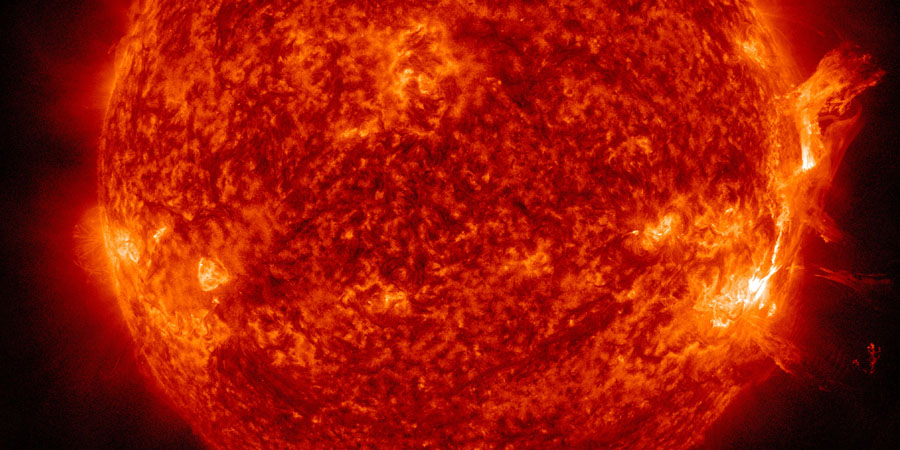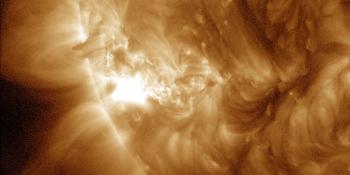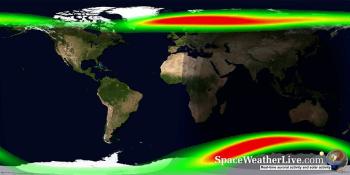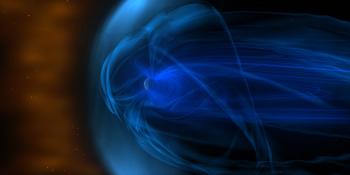M9.3 solar flare, S3 proton storm, Earth-directed CME
sobota, 8 czerwca 2024 15:29 UTC

Sunspot region 3697 has been relatively quiet the past few days as she made her way towards the west limb but she was not planning to exit stage right without one final song. At 01:49 UTC this night the region produced a highly eruptive long duration M9.7 (R2-moderate) solar flare.
The eruption was associated with Type II and IV radio sweeps and produced a bright coronal mass ejection and quickly following the flare solar protons started to arrive at Earth. We currently are in a moderate S2 solar radiation storm but we briefly crossed the strong S3 solar radiation threshold which makes this the first time we reached the S3 threshold since 2017 and the strongest solar radiation storm of the current Solar Cycle thus far. For more information about solar radiation storm we invite you to read this help article.
Let's take a look once again at that beautiful coronal mass ejection. Sunspot region 3697 is close to the west limb but despite that we still see an asymmetrical halo CME outline. A majority of the ejecta is heading well west of our planet but a glancing blow is possible around mid-day on Monday, 10 June. A minor G1 geomagnetic storm watch is in effect for the second half of 10 June.
Sunspot region 3697 has been relatively quiet the past few days as she made her way towards the west limb but she was not planning to exit stage right without one final song. At 01:49 UTC this night the region produced a highly eruptive long duration M9.7 (R2-moderate) solar… pic.twitter.com/Dn3qVkxSoB
— SpaceWeatherLive (@_SpaceWeather_) June 8, 2024
Thank you for reading this article! Did you have any trouble with the technical terms used in this article? Our help section is the place to be where you can find in-depth articles, a FAQ and a list with common abbreviations. Still puzzled? Just post on our forum where we will help you the best we can!
Najnowsze wiadomości
Najnowsze wiadomości z forum
Wesprzyj SpaceWeatherLive.com!
Wielu ludzi odwiedza SpaceWeatherLive aby śledzić aktywność słoneczną lub sprawdzić czy jest szansa na zaobserwowanie zorzy polarnej. Niestety, większy ruch na stronie oznacza większe koszty utrzymania serwera. Dlatego, jeśli jesteś zadowolony ze strony SpaceWeatherLive, zachęcamy do wspierania nas finansowo. Dzięki temu będziemy mogli utrzymać naszą stronę.

Fakty na temat pogody kosmicznej
| Ostatnie rozbłyski klasy X | 2024/09/14 | X4.54 |
| Ostatnie rozbłyski klasy M | 2024/09/14 | M3.0 |
| Ostatnia burza geomagnetyczna | 2024/09/17 | Kp8- (G4) |
| Dni bez plam słonecznych | |
|---|---|
| Ostatni dzień bez skazy | 2022/06/08 |
| Średnia miesięczna liczba plam słonecznych | |
|---|---|
| sierpnia 2024 | 215.5 +19 |
| września 2024 | 151.6 -63.9 |
| Ostatnie 30 dni | 159.7 -53.2 |


